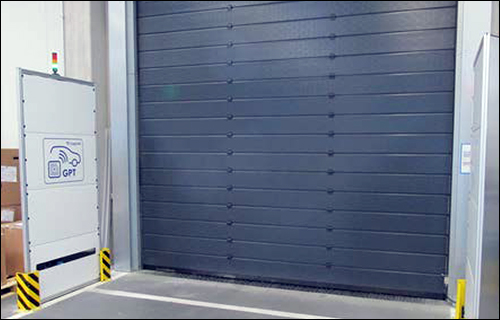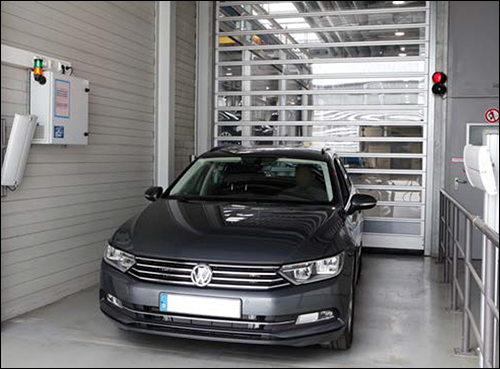Oct 11, 2015The aim of Industry 4.0 is to create an intelligent factory characterized by flexibility, resource efficiency, high ergonomics and electronic networking of all value-adding process partners. One key technological basis for this is the Internet of Things (IoT), which involves the idea that, in the future, objects will communicate independently with each other and with their environment.
The automotive industry has long been striving to optimize production and logistics processes. At the same time, the industry is also known for the high level of electronic networking between suppliers and vehicle manufacturers in the production process. However, it does not automatically follow that the automotive industry is in a position to handle all new requirements in relation to Industry 4.0—for example, cross-company communication.

The background to this is simple. The current communication structures and standards have grown throughout the years and become firmly established, giving rise to complex relationships between networked companies. It takes a commensurate amount of time and effort to ensure that these structures can handle future trends. In practice, the requirements for the implementation of the Internet of Things are often lacking at cross-company level, which means that there is no solid basis for turning potential innovations into reality.
The Internet of Things implies that "things" can also communicate between companies. In the case of the automotive industry, this primarily involves parts and components that are produced by suppliers and assembled by the vehicle manufacturers to create finished vehicles. Parts and components must have a standardized, unique label so that they can be networked and communicate automatically in the future.
There are plenty of comparative examples to illustrate this basic principle. For example, computers are connected to the Internet as a matter of course. To achieve this, computers must have an IP address so that the networked devices can be clearly identified when online. This principle can also be applied to the automotive industry, resulting in the equivalent of an IP address for parts and components. The auto-ID working group of the German Association of the Automotive Industry (VDA) has come up with some potential solutions in industry recommendations VDA 5509 (prototype parts) and VDA 5510 (series parts). These are key early steps in an area with enormous potential.
The same is also true of technical development. During the development phase, the components and parts are essentially prototypes with individual features and properties. As a result, a unique label is of critical importance. "Parts can only be identified effectively and efficiently in the automotive manufacturer's processes if the prototype parts have been given a standardized electronic label by the supplier," explains Hermann Dreyer, head of overall vehicle development for the Volkswagen brand. This helps to hone and refine core processes—for example, the construction status documentation for test vehicles. Such vehicles are subject to continuous changes and optimization processes during the development and testing phase. These processes are often very dynamic, which makes it particularly challenging to document the construction status of test vehicles.

Volkswagen AG's Transparent Prototype project shows how to achieve this in a practical and pioneering way. The prototype parts are labeled by the supplier in accordance with industry recommendation VDA 5509, which applies across all companies. This provides the new "IP address" for prototype parts and involves different labeling methods, such as DataMatrix codes and radio frequency identification. The use of RFID transponders is of special significance. "The vehicle manufacturer can identify RFID-coded prototype parts automatically within a few seconds, even when they have been installed in the vehicle," explains Hanno Wolff, the head of logistics in the Volkswagen brand's technical-development department. "This eliminates the need for many of the usual manual tasks associated with documenting the construction status during vehicle and component testing."
The process-related exchange of electronic data between suppliers and Volkswagen AG is vital for this system to work effectively. The supplier communicates the individual features and properties of the prototype parts to the vehicle manufacturer using a business-to-business (B2B) platform hosted by Group IT. The combination of RFID labeling and the additional electronic data exchange enables scenarios such as the automatic recording of prototype parts in the incoming goods department. The component information provided by the suppliers can also be accessed during the subsequent development and testing process. This enables the test vehicles and prototype parts to "talk" to the development engineers, which supports the analysis process and contributes to its efficiency.

The principle of the Transparent Prototype can be replicated. This requires solid organizational and IT preparation, as well as cross-company adoption of the industry recommendation VDA 5509. Volkswagen AG currently receives RFID-tagged prototype parts that are compliant with the new standard from more than 150 suppliers across its brands (Volkswagen, Porsche and Audi). New suppliers are added almost daily. This means that the Transparent Prototype is one of the largest cross-company applications in the German automotive industry in the context of Industry 4.0. There is also the potential for this technology to be used in series production, as initial technical assessments and feasibility studies have indicated positive results.
Dr. Malte Schmidt is the manager of Volkswagen AG's Transparent Prototype project.

